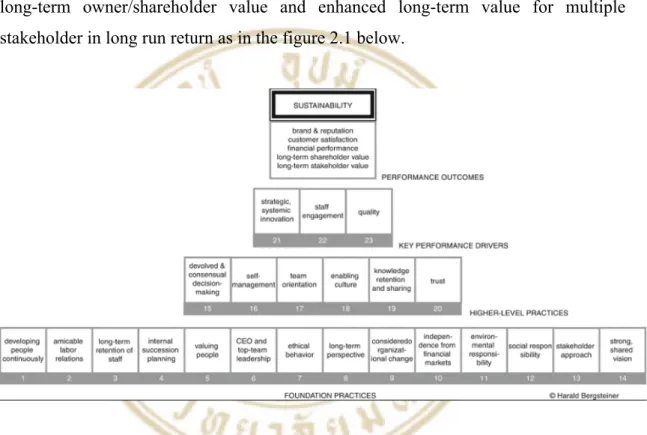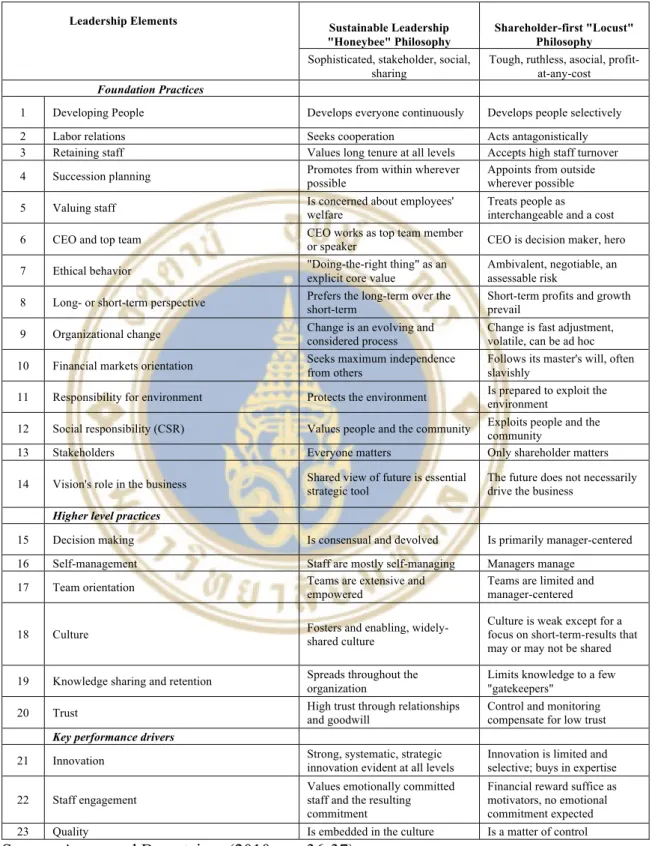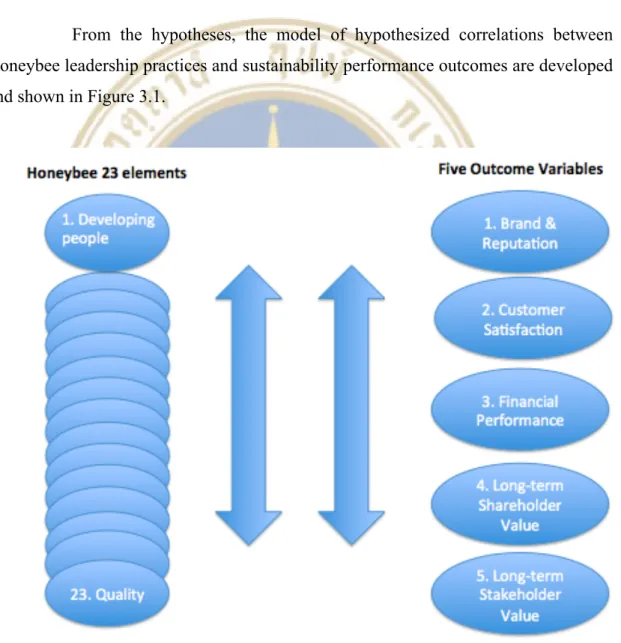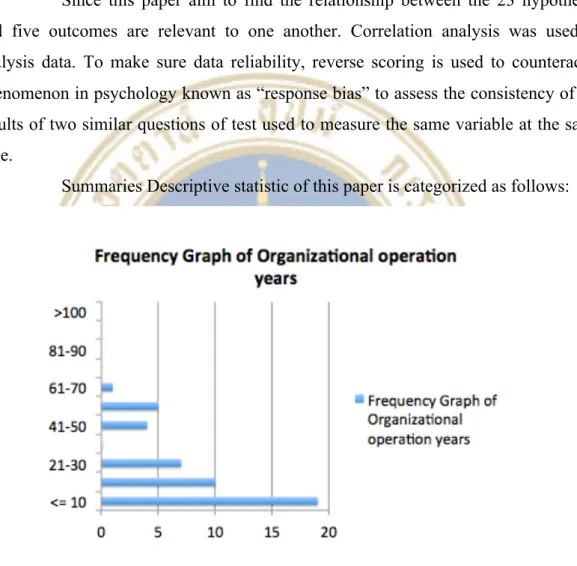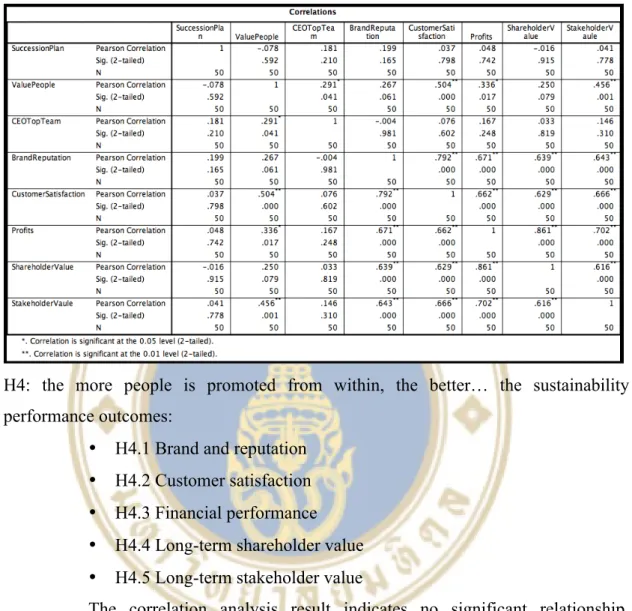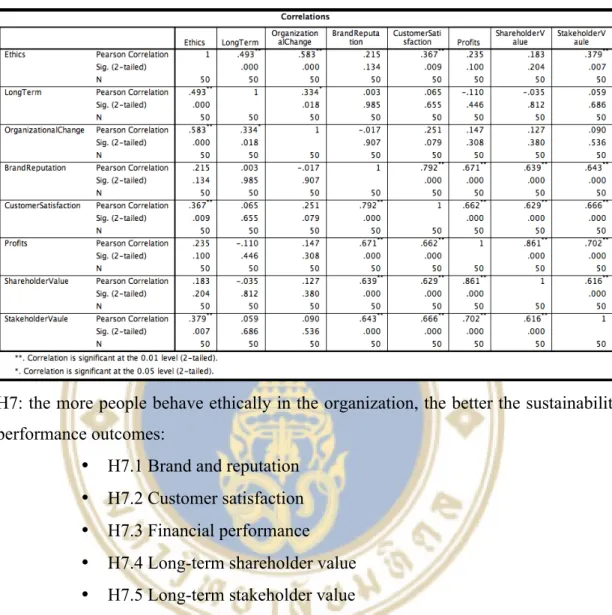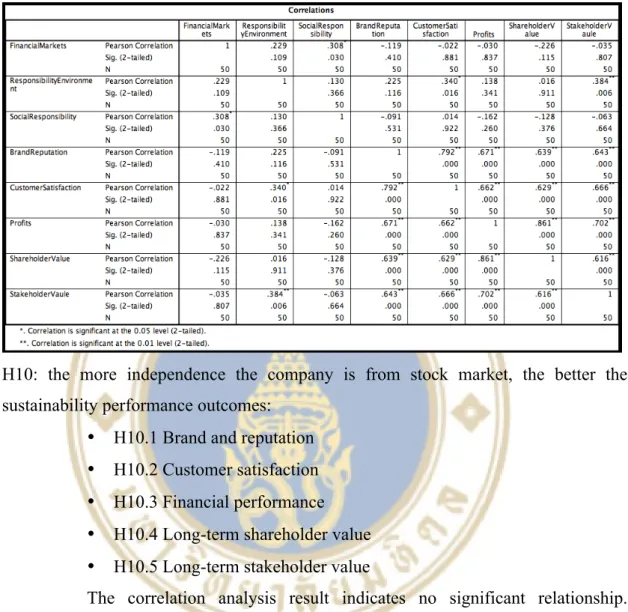The purpose of this research is to investigate the philosophy of sustainability that conforms to the Thai organization in the field of the airline industry. All data were collected from samples working in businesses that are related to the airline industry in the Thai organization and were interpreted through correlation analysis. Although it is an important issue, only a few approaches to corporate sustainability have been examined in the Thai context.
Together, these three levels of practices lead to five performance outcomes, which are increased brand and reputational integrity, improved customer satisfaction, sound operating finances, increased long-term owner/shareholder value, and increased long-term multi-stakeholder value in long-term returns as shown in Figure 2.1 below. As sustainable management has gained support in Thailand as an approach to ensure corporate sustainability and little quantitative research has been conducted on companies in the airline industry, this study adopts honey bee management as a framework to examine the relationship between the business practices of companies in the proposed industry and their corporate sustainability outcomes. performance. In the next chapter, Methodology, the hypotheses for evaluating the performance results are discussed in detail.
Are Honeybee leadership practices correlated with better corporate sustainability performance outcomes in the airline industry in Thailand. The hypotheses for this study were formed from Honeybee's leadership practices and sustainability performance results. The industry has been aware of this point, therefore strategically prepared to compete with competitors in the industry.
This is absolutely a possibility, but it would be better to make it sustainable in long-term performance, so this study would like to test in the airline business with the Honeybee framework in which this industry is consistent with sustainability performance .

FINDINGS
After all data has been entered into the correlation analysis, the results of 23 hypotheses from the correlation analysis are shown below (Table 4.1-Table 4.8). The result of the correlation analysis indicates that there are four significant relationships between educated people and brand reputation, customer satisfaction, shareholder value and stakeholder value. The result of the correlation analysis indicates that there are three significant relationships between employment relationship and profit: shareholder value and stakeholder value.
The result of the correlation analysis shows that there are 3 significant relationships between valuable people and customer satisfaction, profit and stakeholder value. The result of the correlation analysis shows that there are 2 significant relationships between ethics and customer satisfaction and stakeholder value. The result of the correlation analysis shows that there are 2 significant relationships between the accountability environment and customer satisfaction and stakeholder value.
The result of correlation analysis shows that there are 4 significant relationships between stakeholders and brand reputation, customer satisfaction, profits and stakeholder value. The result of correlation analysis shows that there is 1 significant relationship between employee engagement and customer satisfaction. As a conclusion from the results of the correlation analysis, there are 10 important hypotheses in this research paper, which include developing people, labor relations, staff evaluation, ethical behavior, responsibility for the environment, stakeholders, vision, trust, commitment and staff quality, and the remaining 13 are not, as shown in Table 4.9 on the next page.
We will discuss these results in relation to the possibility of why these hypotheses are significant while the others are not, and mention among the most important topics affecting the sustainability performance of the airline industry and reasons for support in the discussion section.
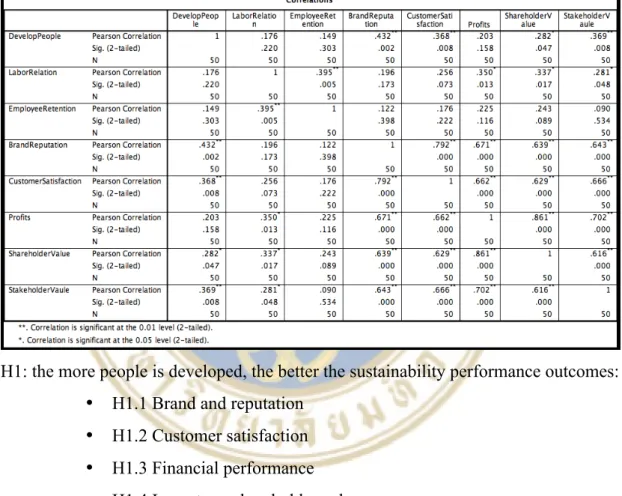
DISCUSSION
Discussion Findings
Since H1, the organization has paid more attention to developing people related to increasing brand and reputation, customer satisfaction, long-term shareholder value and long-term stakeholder value. But the organization must continually invest in people development to increase the value of other outcomes. Therefore, there is no significant financial performance. Maintain a good relationship between the employees which helps the low employee turnover which certainly increases the positive results in the financial performance of the organization.
Having good relations between employees in the organization does not affect the brand and reputation and customer satisfaction, this may be because this practice directly affects the employees and the organization itself. The problem of the functioning of the organization does not affect the overall performance in running the business, then the customer satisfaction and also the brand and reputation of the organization would not be affected. H7 and 11, the more people behave ethically in the organization and the more the company protects the environment, these are related to increased customer satisfaction and long-term stakeholder value.
There is a perception of the organization's brand that is about influencing everyone that helps the brand maintain its high standard and reputation. The customer was satisfied with the organization's behavior and the reflection would be positive for the organization even though including financial performance, which affects the increase of customer satisfaction. H14, the more people in the organization share the corporate vision, the more it will increase in all these 5 results of sustainability elements.
If everyone involved in the organization shares and commits to the same understanding and aligns the entire situation with the organization's vision, then outcomes such as brand and reputation, customer satisfaction, financial performance, long-term shareholder value, and long-term stakeholder value would , increased. accordingly. As a result, shareholders are satisfied and ready to invest in the organization in the long term, which contributes to greater financial performance of the organization. But the rest of the important ones would not be affected much, since they do not involve deeply in the organization of the relations between the employees with each other.
H22, the more a company values emotionally committed staff and their commitment, the better customer satisfaction in the organization. The customer would feel and be impressed by the organizational standard and promise that resulted in the increase of this result. The word has spread with a quality organization that has ensured financial strength and shareholders who are happy with their investment and trust in the organization.
Managerial Implication
The evaluation should be decided quarterly or quarterly during each year and discussed in the joint session. Evaluation means that each department should be evaluated, the evaluation of each employee, as well as the evaluation of the customer's perception of the organization continuously. Training is the method for improving this practice that is related to the "Quality" of the organization and reminds the organization of the "Vision" for their commitment.
People may stick to what they have learned but time change, world change and successive annual training will develop their overall ability up to date to maintain and improve organization's "Quality" and firmly with organization "Vision". Sharing the experiences and 2 ways to give communication feedback of each proposal will make everyone feel "belong" in the organization. Thus they praised and let it be known that all suggestions and good deeds will not be missed in the organization.
From then on, the management team will also reinforce the practice of “Valued People” as the Honeybee Leadership philosophy. Because every staff member at every level should also be valued as part of the organization's family. They would feel the same, act the same and commit to the same 'Vision', consequences for a proud representative workforce and represent the 'Vision' attitude of the organization to all customers with their inner selves.
The development of "trust" throughout the organization also includes the training, joint session, 2 way communication and evaluation. Management team must pay attention to what they have discussed and evaluate the discussion point and then give feedback to each discussion and also wait for the next response from the employees. Management team should act visibly after all sessions have been done to establish the staff's feedback that the management team is not silent about it.
The organization should also concentrate on a long-term relationship with a wide variety of "Stakeholders" as an important point. From "Ethics" and "Responsibility for the environment" are also related to this point, the organization pays more interestingly in the resources saved go in line with the organization ethics then set stakeholders or shareholders, suppliers, managers, employees, politicians, regulators, alliances and other partners will also be satisfied. Moreover, it is an opportunity for manager or the one who is interested in this industry to use this present study as a primary research to go further into the sustainability performance developing in the airline industry.
CONCLUSION

